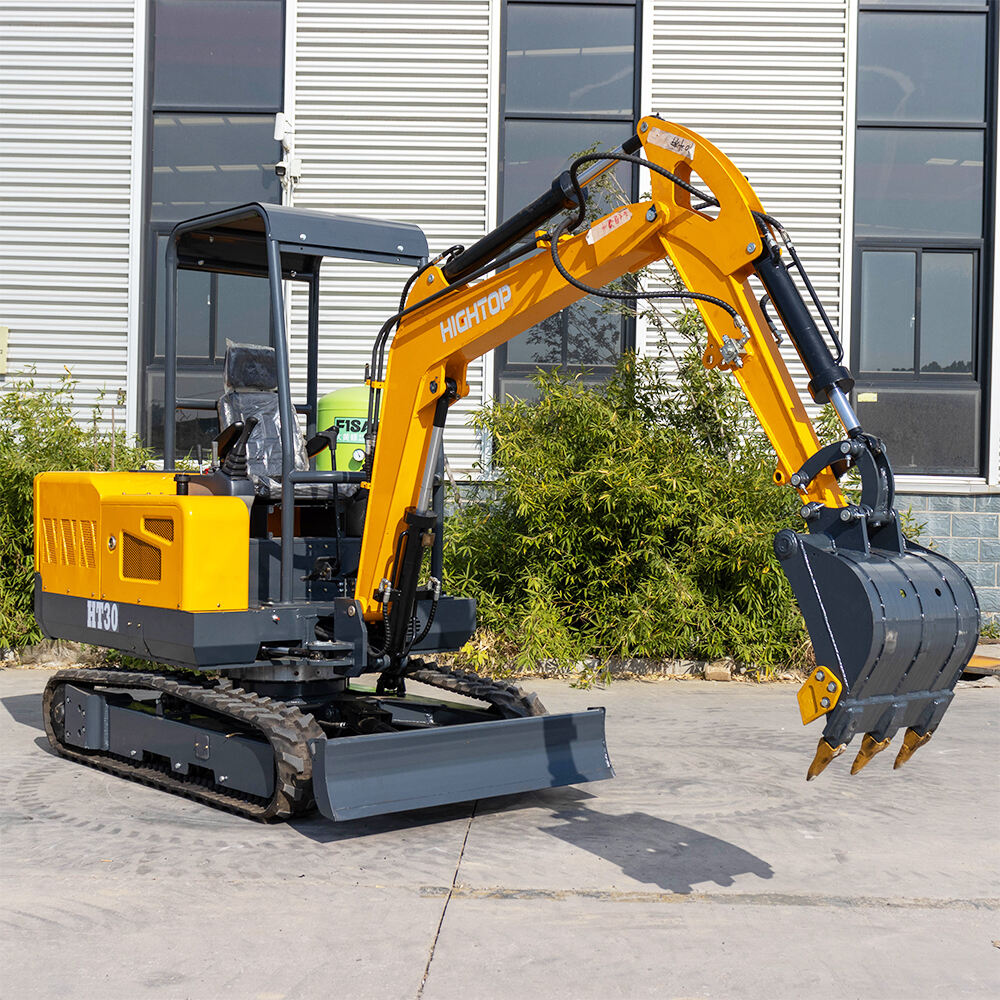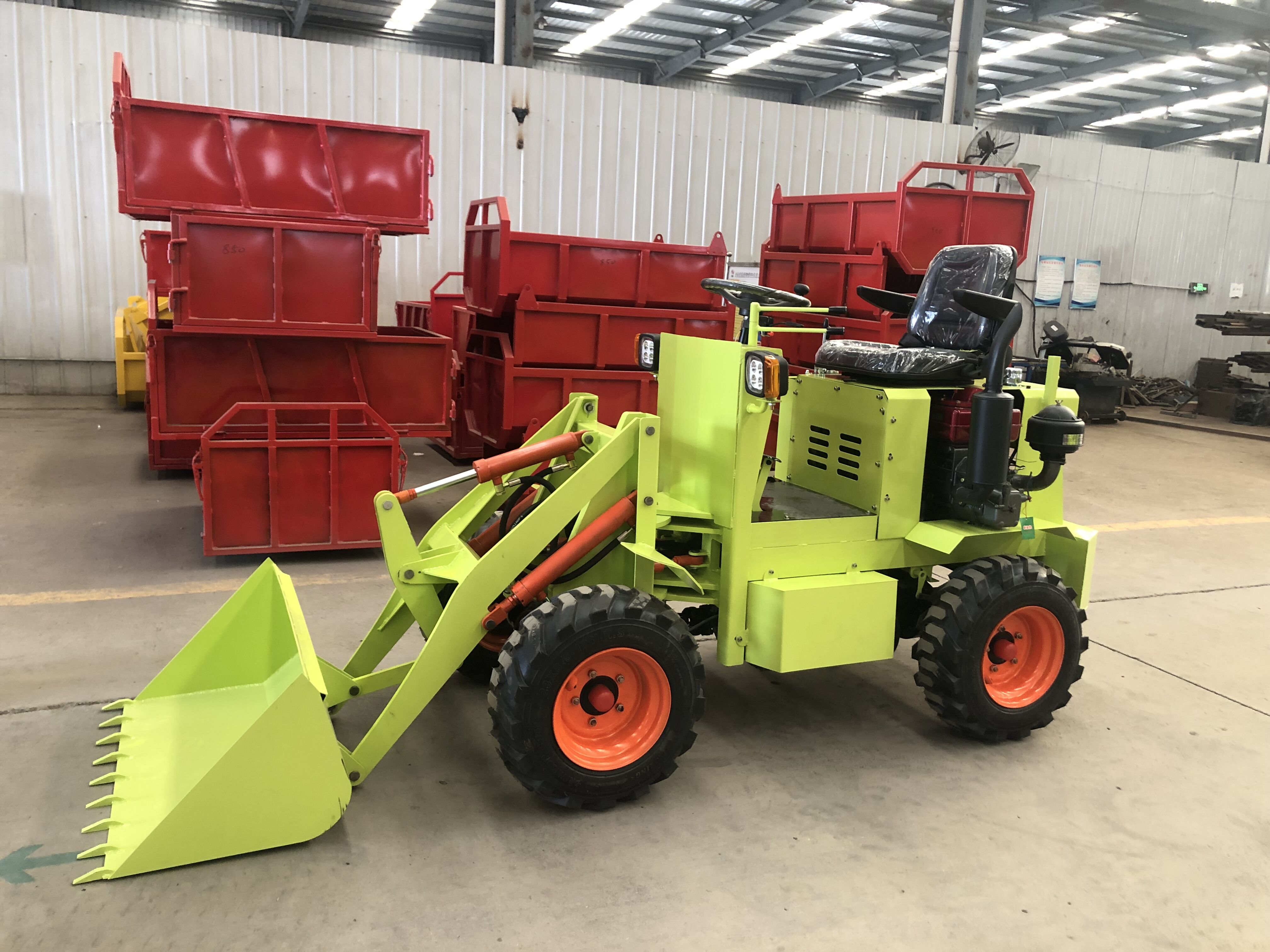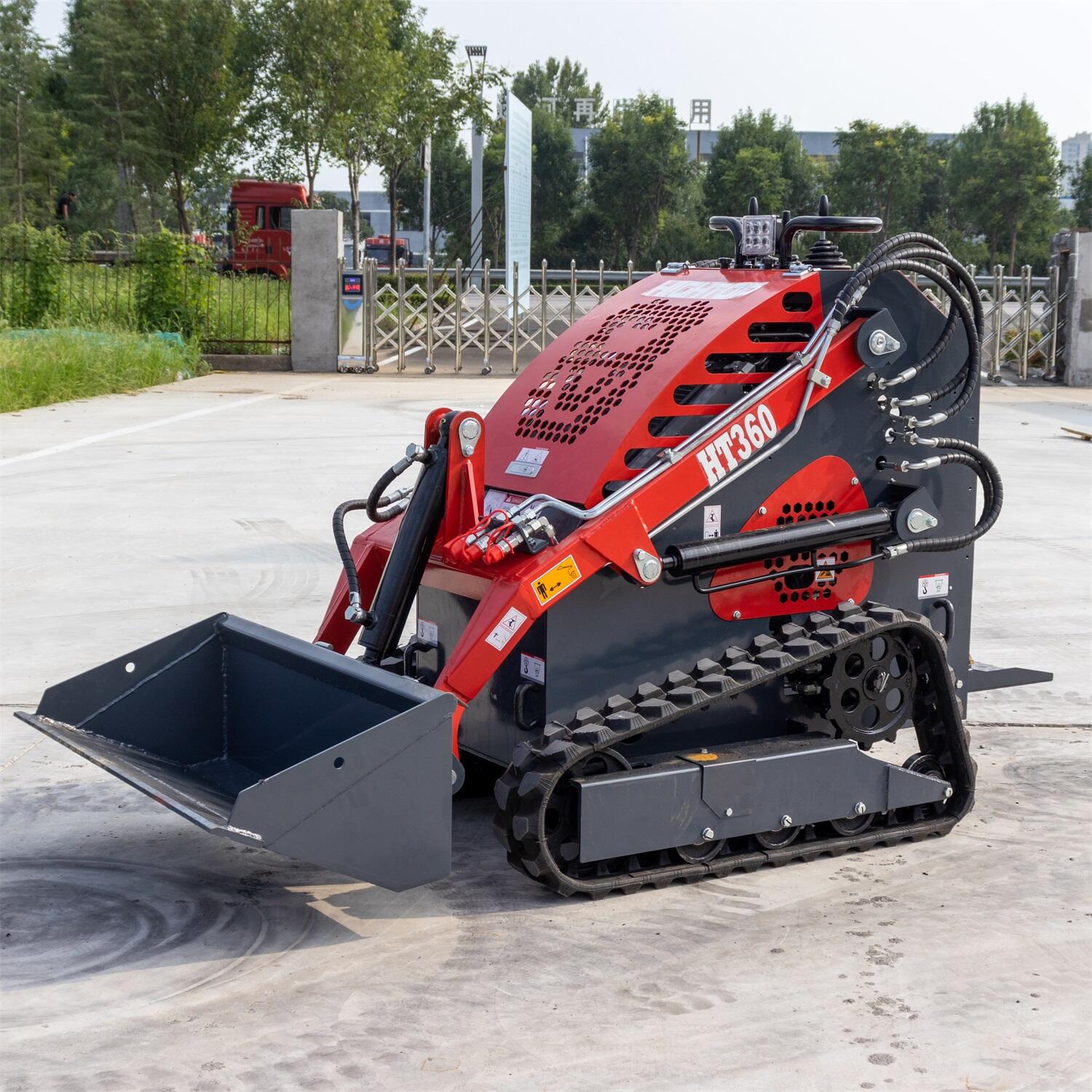Essential Maintenance Tips for Construction Equipment Efficiency
Daily Inspection Routines for Optimal Equipment Performance
Fluid Level Checks and Leak Detection
Checking fluid levels regularly keeps equipment running smoothly and saves money on unexpected breakdowns. Oil, coolant, and hydraulic fluids need constant attention to stay where they should be. When folks skip these basic checks, things tend to go wrong fast. The numbers back this up too – around 8 out of 10 equipment problems actually come down to something going wrong with fluids. For anyone dealing with hydraulics specifically, adding leak detection to everyday checks makes good sense. Most shops find that using dye tests or special fluorescent fluids helps spot those pesky leaks much quicker during routine looks around. This kind of hands-on approach pays off big time in terms of keeping machines working longer between repairs.
Track/Tire Integrity Assessments
Keeping tracks and tires in good condition matters a lot when it comes to running heavy machinery safely and getting the most out of operations. Every day checks need to spot things like worn spots, cracks, or air pressure issues before they become bigger problems. Looking at tread depth through simple visual checks helps figure out when replacements might be needed soon. Studies have shown that keeping tires properly inflated can actually cut down fuel costs around 10 percent, which means real money saved over time. When replacing tracks or tires, going by actual signs of wear instead of guesswork keeps everyone safer while making sure machines last longer between major repairs.
Attachment Security Verification
Checking how secure attachments are every day helps avoid accidents at work sites. Before starting any operations, workers need to make sure all attachments are properly fastened down. Training staff so they know how to check if parts fit together correctly and work as intended makes sense too. According to various safety reports, mistakes made by people operating machinery account for most equipment incidents, which explains why regular inspections matter so much. Creating simple checklists for these daily security checks actually reduces risk factors significantly. When everything from bolts to connectors gets looked at systematically, the whole system works better without unexpected breakdowns during critical moments.
Lubrication and Hydraulic System Maintenance
Proper Greasing Techniques for Moving Parts
Getting the greasing right on heavy equipment makes a huge difference in how long it lasts and how well it performs. First things first, figure out what kind of grease and how much is needed for each part that moves around. Most manufacturers have pretty good info on their websites or manuals about this stuff. Studies show regular greasing cuts down on wear from friction by around 35%, which means less downtime and repair costs over time. For those hard to reach spots, grab a grease gun or some specialty tools designed for tricky areas. These little gadgets make sure every joint and bearing gets properly lubricated instead of just the easy ones. Maintenance done right keeps everything running smoothly for years.
Hydraulic Hose Pressure Testing
Testing hydraulic hoses isn't just good practice it's essential for keeping equipment safe and running smoothly. Most shops run regular pressure tests and check for leaks with standard pressure test kits and gauges. Industry standards generally suggest how often these tests should happen depending on how much the equipment gets used day to day. Keeping records of all these pressure tests matters a lot too. Paperwork helps meet regulatory requirements and gives maintenance teams something solid to reference during safety inspections. These records show exactly what was done, when adjustments were necessary, and help maintain consistent pressure throughout the system over time.
Filter Replacement Intervals
Keeping filters maintained regularly helps ensure hydraulic systems work efficiently and last longer. Most manufacturers recommend changing hydraulic and oil filters at specific intervals outlined in their guidelines to keep everything running smoothly and prevent unnecessary wear on components. Dirty filters matter a lot actually - studies show when they get blocked up, hydraulic efficiency drops around 20%. That's why checking filter status during regular maintenance checks makes sense. Spotting problems early stops unexpected failures and keeps equipment performing at its best level over time.
Cleaning Protocols to Prevent Component Degradation
Debris Removal from Cooling Systems
Regular cleaning of cooling systems matters a lot when it comes to getting rid of debris that causes overheating and breaks down equipment before its time. When dirt builds up inside these systems, it blocks air flow which makes engines work harder than they should, eventually leading to breakdowns. Studies show that keeping cooling systems clean cuts down on engine wear and adds years to the life of machines. Pressure washing works wonders here if done right for cooling systems. Most shops find that combining pressure washing with written cleaning schedules helps them stay on top of maintenance requirements while keeping their equipment running smoothly. Some facilities even track cleaning intervals using digital logs so nothing slips through the cracks between scheduled maintenance checks.
Undercarriage Pressure Washing Best Practices
Making pressure washing part of routine undercarriage maintenance helps stop rust and wear before they become serious problems. When we clean those hard to reach areas underneath regularly, important car parts stay protected against dirt and moisture buildup that leads to corrosion over time. For best results when using pressure washers, keep the nozzle at around 45 degrees and maintain some distance so delicate components don't get damaged accidentally. Mechanics who track how often they clean versus when breakdowns happen tend to see fewer issues with vehicles that get consistent attention below the chassis line. This kind of preventive maintenance just makes sense for anyone wanting their vehicle to last longer without unexpected repairs.
Corrosion Prevention Strategies
Putting corrosion prevention into practice makes all the difference for heavy equipment longevity. Coating metal surfaces with protective layers and quality paints helps stop rust from getting started in the first place. Checking equipment regularly for any signs of corrosion lets maintenance teams catch problems before they become major headaches. Industry research suggests fixing issues early can cut down on repair bills by around half, which adds up over time. Training staff members about basic care practices matters too. When operators know to keep machinery dry during storage periods and store components correctly, they're actually helping preserve what's already been invested. Equipment lasts longer this way, runs better overall, and stays dependable even under tough working conditions where reliability counts most.
Operator Training for Long-Term Equipment Preservation
Proper Start-Up/Shut-Down Procedures
Following the right start up and shutdown routines really matters when it comes to protecting expensive heavy machinery. Most training programs need to address the mistakes workers commonly make during these critical moments. Incident reports show time and again how many breakdowns happen simply because someone skipped a step or rushed through the process. Good training manuals should include detailed checklists that operators can reference while working. These lists serve as reminders for what needs doing and help prevent problems caused by skipping important steps. Companies that invest properly in teaching their staff about equipment startup and shutdown tend to see longer lasting machines and lower repair bills down the road. Some businesses report cutting maintenance expenses by almost half after implementing better training practices around these procedures.
Load Capacity Awareness Training
Knowing how much weight machinery can handle safely matters a lot for keeping both machines and workers safe. Most operators need proper training to spot when loads are getting too heavy before it becomes dangerous. Training sessions that include real stories from the field where overloaded equipment caused serious problems help drive home why this matters so much. Looking at accident reports shows exactly what happens when weight limits get ignored. Including diagrams or pictures in training materials really helps people grasp how weights need to be distributed properly across different parts of the machine. These kinds of training programs save lives obviously, but they also make sense financially since well maintained equipment lasts longer and breaks down less often, cutting down on those expensive repairs everyone hates paying for.
Early Problem Reporting Protocols
Creating good systems for catching problems early helps prevent serious equipment damage and gets fixes done faster. When workers have easy ways to report machine issues, they tend to speak up sooner rather than later. Research shows this kind of ahead-of-time maintenance can actually save companies around 60% on big repair bills. Training staff to spot small problems before they become big ones makes all the difference. People need to know what normal wear looks like versus something truly wrong. Companies that encourage quick reporting create better working relationships between frontline staff and management teams. This approach keeps machines running longer without expensive breakdowns, which matters a lot when budgets are tight.
High-Efficiency Construction Equipment Solutions
HT30 3ton Mini Excavator: Swing Boom Technology
The HT30 3 Ton Mini Excavator comes equipped with swing boom tech that really boosts how well it moves around and works precisely at construction sites. Most regular excavators need the whole machine moved just to adjust the arm position, but not the HT30. Its arm swings independently, which means operators can work faster without wasting time moving the whole rig around. Contractors report saving both time and money because of this feature. Studies show machines like the HT30 with swing boom systems run about 30% more efficiently compared to older models, cutting down on fuel burn and tailpipe emissions too. For contractors who care about green building practices, this machine checks all the boxes while still getting the job done right.
HTML18 Diesel Mini Loader: Multi-Attachment Versatility
What makes the HTML18 Diesel Mini Loader really special is its ability to handle so many different jobs on site. Contractors love having one machine that can do everything from digging trenches to moving materials around because they don't need to rent extra equipment. The loader comes with attachments such as buckets for scooping dirt, forks for lifting pallets, and sweepers to clean up debris after work hours. Many people who own these machines tell stories about how much time and money they saved compared to traditional methods. Some reports indicate that using multifunctional loaders like the HTML18 can actually reduce overall costs by somewhere around 15% when looking at long term projects. That kind of flexibility definitely pays off when dealing with unpredictable construction schedules and changing job requirements.
HTS360L Skid Steer Loader: Ergonomic Maintenance Design
The HTS360L Skid Steer Loader comes with some really thoughtful ergonomic features designed to keep operators comfortable while working long hours. The controls are positioned where they should be, and the dashboard shows everything clearly so operators don't get lost looking for information when they need it most. Research from industry groups indicates machines with good ergonomics can boost productivity by around 20 percent and also lower injury rates among workers who spend days at a time operating heavy machinery. What's more, this loader was built with maintenance in mind. Most parts are within reach without needing special tools or dismantling half the machine first. Mechanics report saving several hours each month just doing regular checkups compared to older models. These practical design choices mean less downtime and money spent fixing things, which explains why many contractors continue choosing the HTS360L despite newer competitors entering the market.
Preventive Maintenance Record-Keeping Strategies
Digital Log Implementation Benefits
Switching over to digital maintenance logs brings lots of efficiency gains when it comes to keeping track of big machinery. With digital records, entering and finding information becomes much easier, cutting down on admin work by around 30% according to what some industry folks have found recently. Staff members get to spend their time doing actual important stuff instead of getting bogged down with paper trails all day long. When these digital logs connect with current inventory systems, companies gain better control over resources because they can see exactly what parts and supplies are available right now. The connection between systems helps predict what might be needed next and cuts down on unexpected downtime something that matters a lot for businesses dealing with things like mini excavators or skid steer loaders in their inventory.
Warranty Compliance Documentation
Keeping good records for warranty purposes really matters when it comes to protecting money spent on big machines. Companies that fail to maintain these records often find themselves out of luck when making warranty claims. We've actually seen instances where missing paperwork completely shot down potential claims. Sticking to regular maintenance plans makes all the difference here. Many operators now turn to digital systems for tracking their work history because they're just easier to manage. Some smart approaches involve keeping electronic logs of maintenance activities and setting reminders so nothing slips through the cracks between scheduled services. For anyone looking after valuable equipment investments, detailed documentation isn't just nice to have it's practically necessary. These methods work across different types of machinery too from those compact skid steers with various attachments to the newer models of electric forklifts hitting the market right now.
Resale Value Optimization Through Service History
Keeping track of when and how equipment gets serviced makes a big difference when it comes time to sell. Studies show that machinery with good maintenance records often sells for around 20-30% more than similar items without proper documentation. When someone sees those records, they know the previous owner took care of things properly, so they feel better about buying used gear. Most folks now store their service logs digitally these days, making it easy to pull out proof during price talks. Anyone looking to sell stuff like skid steers will find that putting together those records pays off handsomely at closing time. The extra effort definitely translates into real cash in the bank when the deal goes through.




